This article was co-authored by Ted Coopersmith, MBA. Ted Coopersmith is an Academic Tutor for Manhattan Elite Prep, a test prep and academic tutoring company based in New York City. In addition to general academic advising, Ted has expertise in preparing for the ACT, SAT, SSAT, and ASVAB tests. He also has over 30 years of financial controller advising and consulting experience. He holds a BA from the City University of New York (CUNY) and an MBA from Pace University.
There are 8 references cited in this article, which can be found at the bottom of the page.
wikiHow marks an article as reader-approved once it receives enough positive feedback. This article received 58 testimonials and 92% of readers who voted found it helpful, earning it our reader-approved status.
This article has been viewed 1,049,900 times.
MIT is one of the best engineering schools in the United States and the world. It comprises a huge vibrant & participative international community comprising of 9% student at undergraduate level and 38% at graduate level. Unfortunately, around 90% of students applying to get in are rejected. Even a stellar SAT/ACT score and a 4.0 GPA does not guarantee admission. MIT is essentially looking for super-students; however, being a super student is definitely achievable.
Steps
During High School
-
1Ace your classes. You must show your ability to do well in classes. While this may not require a 4.0 GPA in high school, getting lots of B's won't help.
- Tell your teachers about your aspirations. They'll want to see you succeed. Ask for outside help whenever you feel it's necessary.
-
2Take weighted courses. At some high schools, certain courses affect your GPA more than others. This is because they're just plain harder. In fact, with weighted courses, you can end up with more than a 4.0 (on a 4.0 scale)!
- Skip study hall and opt for that AP course. It shows drive and initiative. MIT requires students who take every opportunity to learn and better themselves.
- This does not mean cutting classes like band or choir out of your schedule. MIT also wants cultivated, interesting students--not just mathbots. If you're good at something, stick with it. It'll pay off.
Advertisement -
3Get college credit. Many schools offer opportunities for seniors to take classes at their local university or community college. Showing you can handle college courses as a high school student is impressive.
- If your school doesn't have a program like this, ask. Better yet, create one. They won't turn down your opportunity for a better education.
- MIT is a very math and science oriented school. Taking any college course looks great--but loading up on calculus (and loving it) looks even better.
-
4Pile on the extra-curricular activities. This is where the genius-IQ students get turned away. You can have absolutely outstanding test scores and grades and still get turned down. About 60% of all applicants are fully qualified. [1] So ditch those video games and sign up for the debate team.
- MIT has what's called "holistic admissions." This means that not only are grades and test scores considered, but they also take into account the whole person.
- Try to focus in on a few core activities and show your talents. If you're on the rowing super! You're talented and athletic. But if you're on those teams and in show choir, you're talented, athletic, and artistic. Show them that you care about a certain few activities.
- Show initiative. Do you feel passionate about something your high school doesn't have? Don't be limited by the size or success of your high school. Start that environmental club (you could be the President!). Form an after-school Spanish study group. Think outside the box.
- Compete in many competitions - MIT demographics show that 10 to 12% of their approved petitions are from people that have some sort of achievement (ISEF, AIME, USPHO, IBO, etc.).
-
5Cultivate relationships with your teachers. To get into MIT, you'll need two evaluation letters. With that stellar GPA of yours, it shouldn't be hard.
- You'll need two letters from teachers of opposing subjects. One from the math or science department and one from the humanities or languages.
- Why stop at 2 when you can do 3? It's best to have a back up in case a teacher gets sick or is running behind your deadline.
-
6Put your best self on Facebook. Having an internet profile that shows your best side is ideal in today's techno-driven world. So, go ahead, post away those photos of your rewards! You earned it.
- Allowing colleges and employers to look at information about you turns you into a real person. You are no longer just a name on one of a thousand pages. Open your profile and invite them to look. Any 18-year-old with an impressive internet profile is a diamond in the rough.
- As an alternative, close your profile to the public. But make sure it's secure--the folks at MIT know what they're doing.
-
7Get involved in your community. A high-schooler who is truly world-thinking and driven doesn't just stop within the grounds of their educational establishment.
- Volunteer at your local hospital, animal shelter, or nursing home. MIT seeks to serve humanity and builds their student base off this criterion.
Essay, Application, and Test Scores
-
1Write a compelling essay. There are many topics you can choose from; however, choose something that appeals to you. What do you like to talk about? What would you want to read about? Here are some options:
- Evaluate a significant experience you've had and its impact on you. This could be an ethical dilemma, a risk you have taken, or simply an achievement. Avoid the "Look how great I am!" and opt for self-evaluation.
- Discuss an issue of concern and its importance to you. This could be on any level: local, national, or global. But don't turn it into a righteous lecture.
- Describe an experience that is telling of what you would bring to MIT's college community. The admissions board is looking for students who will actively contribute.[2]
-
2Get your application in on time. As all universities, MIT has several deadlines that must be met in order to be considered. In addition, there is a $75 application fee for processing.
- For early action, the interview scheduling deadline is October 20th. November 1st is the ultimate deadline for reference letters, essays, and the application itself.
- For regular action, the deadline to schedule an interview is December 10th. January 1st is the ultimate deadline for reference letters, essays, and the application itself.
- The SAT and ACT tests dates should be in November and January, respectively.
-
3Master the standardized test. Some schools accept one or the other; however, MIT accepts both.
- For the SAT, MIT released their 2017 ranges data[3]
in the 25th-75th percentile form. The first number represents the score of a student in the 25th percentile (25% of students got this score or lower). The second number represents the score of a student in the 75th percentile (75% of students got this score or lower). The higher the percentile, the more students there are that are below you.
- SAT Composite: 1480-1590
- SAT Evidence-Based Reading and Writing: 730-780
- SAT Math: 770-800
- For the ACT, MIT follows the same guidelines.
- ACT Composite: 34-35
- ACT English: 34-36
- ACT Math: 34-36
- MIT has incredibly high average test scores. It's in your best interest to sign up for a prep course and/or take the test multiple times (if necessary). These are considered good practices, not second chances.
- For the SAT, MIT released their 2017 ranges data[3]
in the 25th-75th percentile form. The first number represents the score of a student in the 25th percentile (25% of students got this score or lower). The second number represents the score of a student in the 75th percentile (75% of students got this score or lower). The higher the percentile, the more students there are that are below you.
Ace the Interview
-
1Show passion. You are about to join a community dedicated to applying science and technology to solutions that will improve the world. Make it clear that you are ready and eager to be a part of that.
- Have you rewired the electricity in your bedroom? Made your own locks on your doors? Don't be hesitant to include these things in your interview. You will stand out in your creativity and uniqueness.
- MIT is, ultimately, a network. Let them know how you work on a team and how you make that team better.
- MIT wants something unusual, even weird, even freakish. If you have, let's say, a fascination with a certain fish, you should develop that interest. Learn about that fish. Own that fish. Do something to help that fish. You want to have something that everyone else doesn't. Stand out.
-
2Show balance. Things that happen in an a cappella group or at bible camp are relevant to things that happen in the classroom and science lab. Leave neither hide nor hair unturned.
- MIT is looking for incredibly dynamic students. Making it clear that you're involved in every aspect of your community--as a volunteer, student, artist, athlete, employee, caregiver, initiator--to show just how valuable you are. Most of their applicants will be great at 1 or 2 things; very few will be great at many.
-
3Show you fit. There are tons of good schools out there--why do you want to go to MIT? Do your research and prove you belong.
- Log onto their website and take a look at their stats. Do you like the size of their student body? The set up of their campus? Their location? Their mission statement? Familiarize yourself (like you would a friend) to figure out if you are truly compatible.
- Take a tour. Many universities have high freshman dropout rates because they're just not at the right place at the right time. Be certain this is what you want and fully commit.
- Don't worry about financial aid. MIT is one of the few institutions in America that is need-blind. That is, students who can pay full tuition have no advantage over those who cannot.
International Students
-
1Take the tests. You have two options and MIT shows no preference for either one. Take the test with which you are the most comfortable.
- The SAT or the ACT and 2 SAT subject tests: one in math and one in science.
- The TOEFL as well as 2 SAT subject tests: one in math and one in science.
- The second is recommended for students with lower English-speaking skills. MIT offers no ESL courses; therefore, a TOEFL score of 600+ and 100+ is recommended for the Paper Based Test and the Internet Based Test, respectively. [4]
- For students residing in countries that do not offer the SAT or ACT, you will be considered on a case-by-case basis and will not be penalized.
-
2Complete the application. Log onto MIT's website to start the process. You will create an online profile and go from there.
- In early September, start your application.
- December 10th is the deadline to contact your interviewer; January 1st is the deadline to apply.
- In late March, decisions will be released. [5]
-
3Schedule an interview. This is with an MIT alum whose name you will receive via your MIT account. But remember: You have to contact them!
- Due to capacity issues, only a limited number of interviews are available and only in certain regions. If you live outside the US and your interview is initially waived, you will be notified if one becomes available.
- Skype interviews are a possibility. Discuss with your Educational Counselor (EC).
- Requesting an interview will not ensure that you get one. If it isn't possible to provide you with an interview, it will not be held against you.
- Due to capacity issues, only a limited number of interviews are available and only in certain regions. If you live outside the US and your interview is initially waived, you will be notified if one becomes available.
Transfer Students
-
1Meet eligibility. This means two or more completed terms at a reputable college, university, or technical institute. You must have at least one year (but not more than 2 1/2 years) of college credit under your belt.
- It's highly recommended to take calculus and physics classes before applying. Core graduation requirements for all majors at MIT are two semesters of college calculus and calculus-based physics, and one semester each of chemistry and biology. [6]
-
2Round yourself out. Unlike high school students, you've had one or two years in the adult world to take charge. The extra-curricular activities don't stop with high school.
- Make your job something to brag about. Seek out specialized duties or a managerial position to make up for the time (and money) you don't have to spend organizing bake sales for away football games.
- Don't lose your passions. Were you great at an instrument in high school? A star track runner? Keep it up. MIT is about contributing to the global community--not just about good grades.
-
3Submit a strong application. This consists of a biographical information form, evaluation letters, essays, transcripts, activities form and tests form. The application packet can be downloaded on their website.
- The biographical information form is the first step to applying and includes the initial $75 application fee.
- Evaluation letters (3): one from a math or science instructor and two from an instructor of any topic
- Essays (3): two short-answer response questions (250 word limit) and one longer essay (+/-500 words) [7]
- Activities form: Use the form on their website. It's similar to a resume but a slightly different format.
- Standardized tests: self-reported scores and scores from the agency
- Both high school and college transcripts
-
4Meet the deadlines. These are obviously different for spring and fall semesters.
- November 15th is the spring application deadline. It is also the last month to take any necessary standardized tests.
- January is the last month to take standardized tests and February 15th is the fall application deadline.
- Applicants will be notified in mid-December and early April, respectively.
Community Q&A
-
QuestionIf my school does not offer weighted courses, will that affect my odds of admission?
 Community AnswerNo. MIT wants you to take the most challenging courses possible at your level. If there are none, they will look at the rest of your application.
Community AnswerNo. MIT wants you to take the most challenging courses possible at your level. If there are none, they will look at the rest of your application. -
QuestionWould it be better to graduate from high school early and start college, or wait and complete all four years?
 Community AnswerComplete all four years. MIT is looking at grades, SAT scores and extra classes, so it is nearly vital to complete all four years - even if you're just doing the minimum.
Community AnswerComplete all four years. MIT is looking at grades, SAT scores and extra classes, so it is nearly vital to complete all four years - even if you're just doing the minimum. -
QuestionAre good SAT scores the only criteria for MIT admission, or are there other factors?
 Community AnswerThere are other factors, such as your grades in high school, how advanced the classes you took were (e.g., Honors, AP), AP test scores, extracurricular activities, any other special accomplishments you might have, your application essays, and your teacher recommendation letters.
Community AnswerThere are other factors, such as your grades in high school, how advanced the classes you took were (e.g., Honors, AP), AP test scores, extracurricular activities, any other special accomplishments you might have, your application essays, and your teacher recommendation letters.
Warnings
- If you cannot handle pressure, MIT is not for you. There are dozens of good engineering and business schools. Researching them all will show you what's out there and could be better for you.⧼thumbs_response⧽
References
- ↑ http://www.studentsreview.com/gettingin.php3?SH=MIT&ST=MA
- ↑ http://collegeapps.about.com/od/essays/a/EssayPrompts.htm
- ↑ http://collegeapps.about.com/od/collegeprofiles/p/MIT_Profile.htm
- ↑ https://www.prepscholar.com/toefl/blog/toefl-score-range/
- ↑ http://mitadmissions.org/apply/international/mitapp
- ↑ http://mitadmissions.org/apply/transfer/before
- ↑ http://mitadmissions.org/apply/transfer/application
- http://www.mitadmissions.org/
About This Article
To get into MIT, focus on doing well in your classes, and strive to get straight A’s with only the occasional B. Opt to take weighted classes, like Honors, AP, or IB courses, which are more rigorous. Get involved in 1-2 extracurricular activities that showcase a variety of interests, such as sports and musical theater. Then, study for your SAT and ACT to meet or exceed the average scores posted on the MIT admissions site. Remember to submit your application and personal essay on time! For tips on acing the interview portion and writing your personal essay, scroll down!
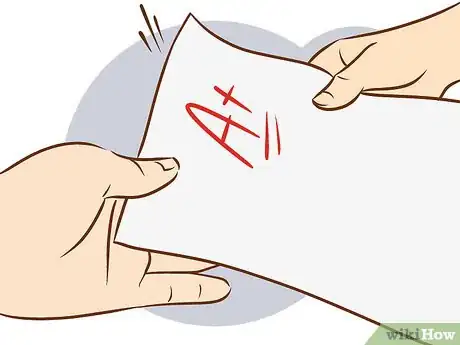








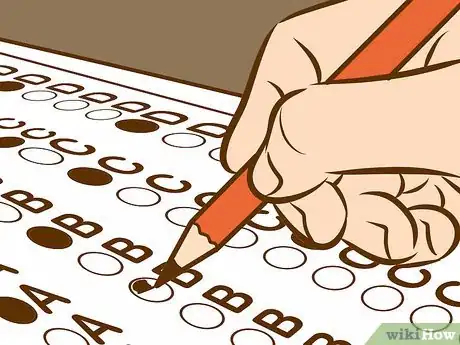



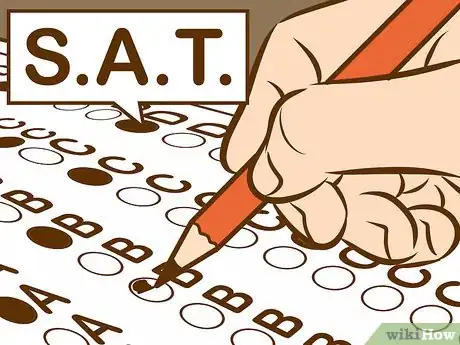
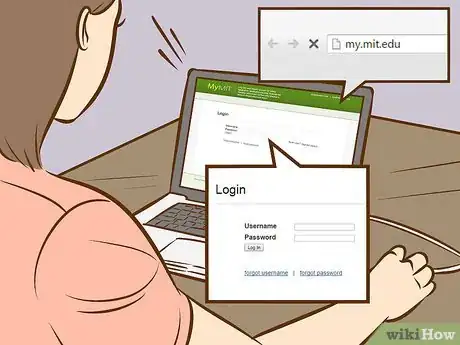



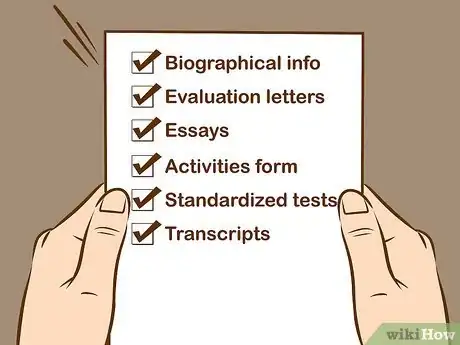




-Step-11.webp)

















-Step-11.webp)


































